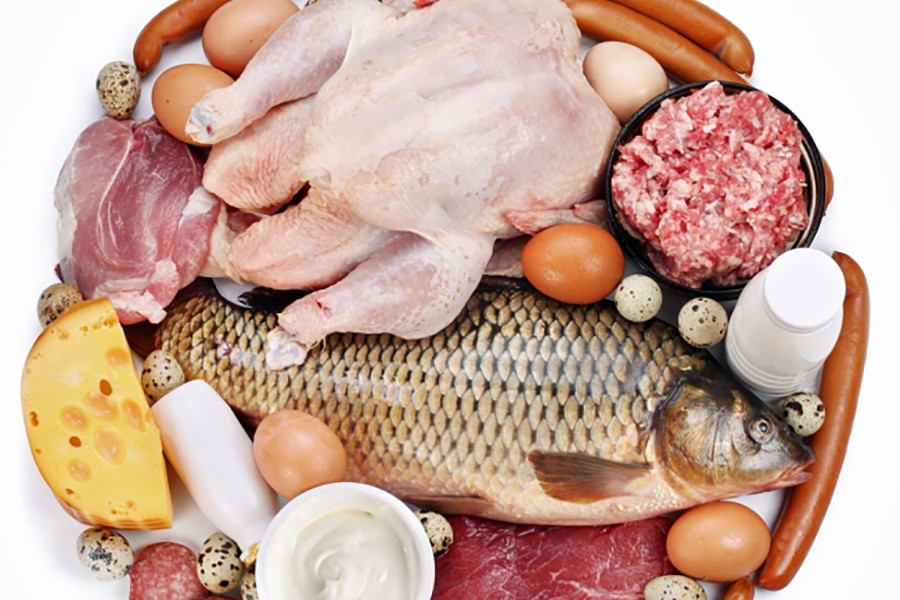That production of fish, meat and milk -- three essential food items -- has gone up substantially does hardly need to be substantiated by official disclosures. The availability of the items in the markets of a country of over 160 million people does prove that there has been notable increase in their production, thanks to cultured production of fish and poultry. Fish production has gone up nearly 40 per cent, meat 600 per cent and eggs 200 per cent over a period of one decade, ending in the fiscal year (FY), 2016-17. The production of milk also recorded a 300 per cent increase during the same period.
Against the backdrop of such a positive development, the Ministry of Fish and Livestock last Sunday claimed that the country attained 'self sufficiency' in fish and meat production for the first time in the last fiscal. Increase in production of fish, meat, eggs and milk in recent years is indisputable. But the claim about self-sufficiency appears not consistent with ground realities. For determining the autarky level of these protein-rich food items, their production has to be matched with the consumption need of the total population.
The fact remains that a large segment of the country's population is undernourished, in terms of consumption of fish, meat, eggs and milk. Cereals, mainly rice, constitute most part of the food consumed by the majority of the population. Studies have found that nearly two-thirds of daily diet consists of rice, some vegetables, a little amount of fish and pulses, if and when available. Milk products and meat are consumed only occasionally. There is no denying that daily diets in rural Bangladesh are highly unbalanced. The actual level of consumption of fish, meat, eggs and milk is well below their daily requirement.
This is also true in the case of some other food items, including fruits, vegetables and oils. Such a low level of consumption does obviously have certain health implications, particularly in the case of women and children. The prevalence of malnutrition and micronutrient deficiencies among women and children in the country is found to be very high. The increase in production of fish, meat, milk and eggs does not have any bearing on their nutritional status, for the consumption of the same by them is well below requirement. Attainment of self-sufficiency in the production of these protein-rich food items is still far away, when considered in the context of actual requirement of the entire population. This is, however, not to belittle the achievements made so far in the fisheries and livestock sector. While the supply of many food items, including the protein-rich ones, has increased manifold over the years, the consumption of the same among the poor and low income people has not increased much since their purchasing power is highly inadequate.
Yet the country needs to produce more fish, meat, milk and eggs to meet their ever-increasing demand. Entrepreneurs, big and small, engaged in their production would also continue to require official support. Hopefully, the government would ensure this. It is now more or less obvious that the future of protein supply would be largely dependent on cultured fish and poultry farming. But the government should do its best to protect the open water fish areas and save the indigenous fish and poultry birds from going extinct. Enabling the poor and low-income people to consume protein-rich food in adequate quantities is an issue that would require due attention of the policymakers.


